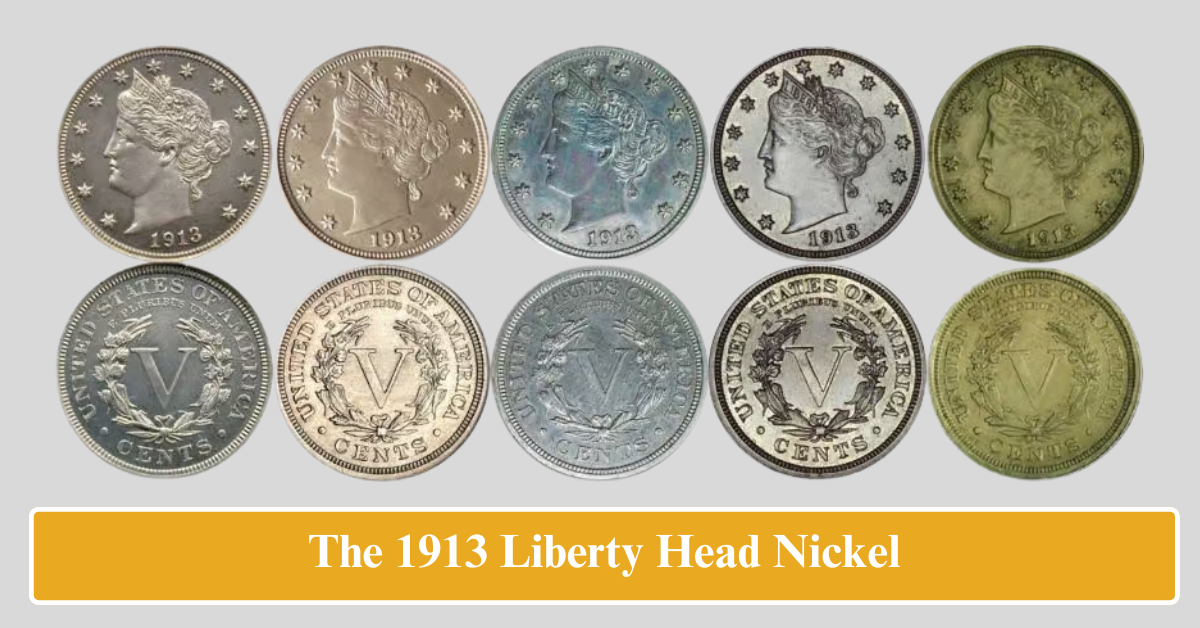The 1913 Liberty Head Nickel is one of the most mysterious and coveted coins in American numismatic history. With only five known specimens, this coin’s origin remains shrouded in intrigue, making it a prized possession for collectors and a subject of fascination for historians.
A Glimpse into History
The Liberty Head Nickel was officially replaced by the Buffalo Nickel in 1913. However, despite no official records of its minting, five Liberty Head nickels bearing the 1913 date surfaced, leading to speculation about their creation.
Many experts believe that Samuel W. Brown, a former Mint employee, secretly produced these coins—possibly to create an artificial rarity for personal gain. He later showcased them at the 1920 American Numismatic Association (ANA) convention, marking their first public appearance and sparking widespread interest.
Distinctive Features of the 1913 Liberty Head Nickel
While visually similar to earlier Liberty Head nickels, the 1913 version possesses unique characteristics that set it apart.
Obverse Design
- Features Lady Liberty’s profile, adorned with a coronet inscribed with “LIBERTY.”
- Encircled by thirteen stars representing the original American colonies.
- The date “1913” is prominently displayed below Liberty’s image.
Reverse Design
- Showcases a large “V” (Roman numeral for five), representing the coin’s denomination.
- Encircled by a wreath of corn, cotton, and wheat—symbols of American agriculture.
- The inscriptions “UNITED STATES OF AMERICA” and “E PLURIBUS UNUM” appear above the wreath.
Specifications
| Feature | Details |
|---|---|
| Diameter | 21.2 mm |
| Weight | 5 grams |
| Composition | 75% copper, 25% nickel |
| Edge | Smooth |
The Five Legendary Specimens
Each of the five known 1913 Liberty Head nickels has a well-documented provenance, adding to its mystique and value.
| Specimen Name | Current Location/Owner | Notable Facts |
|---|---|---|
| Eliasberg | Private Collection | Graded PR66, considered the finest; sold for $4,560,000 in 2018. |
| Olsen-Hydeman | Private Collection | Featured in a 1973 episode of Hawaii Five-O; sold for $3,737,500 in 2010. |
| Norweb | Smithsonian Institution | Donated by the Norweb family in 1978; on display at the National Museum of American History. |
| Walton | Private Collection | Believed lost for decades after a 1962 car accident; authenticated in 2003 and sold for $4,200,000 in 2022. |
| McDermott-Bebee | ANA Money Museum | The only specimen with circulation marks; donated to the ANA in 1989. |
Valuation Insights
The value of a 1913 Liberty Head Nickel is influenced by several factors, including its condition, provenance, and market demand.
Recent sales have seen these coins fetch between $3 million and $5 million. For instance, the Eliasberg specimen, regarded as the finest example, sold for $4,560,000 in 2018. As interest in rare coins grows, future sales could break even higher records.
The 1913 Liberty Head Nickel remains a symbol of intrigue and rarity in the numismatic world. Its unauthorized minting, combined with its extreme scarcity, ensures its continued status as one of the most sought-after coins in history.
FAQs
It is widely believed that Samuel W. Brown, a former Mint employee, clandestinely produced these coins—possibly to create an artificial rarity for personal profit.
Only five specimens are known, each with a well-documented history and ownership trail.
The combination of rarity, historical significance, condition, and the mystery surrounding their unauthorized creation makes them highly valuable.

